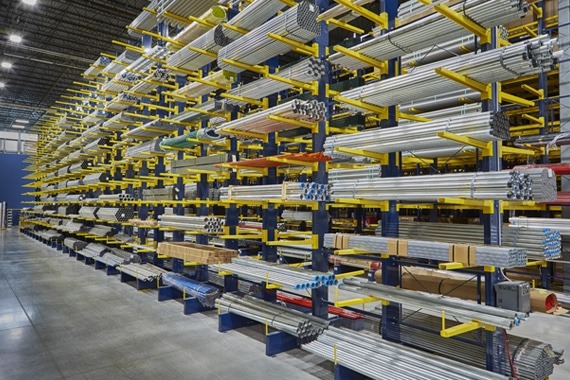The storage of construction materials is important to keep their characteristics and specifications intact for construction. Lack of careful consideration of storage sites will result in the destruction of materials and the wastage of time and money to bring another set of materials.
There are vital materials such as bricks, steel, cement, aggregates, timber, and concrete blocks. Top construction companies in India and top civil contractors of Pune have adopted the following wise ways to store construction materials on site:
1. Storage of bricks
Bricks are one of the vital materials on construction sites. Bricks should be kept as close as possible to the site to save efforts of unloading and transportation. Different types of bricks should be kept separately. Moreover, bricks of different sizes and strengths should be stacked separately. Bricks should be kept on dry solid ground. The ideal stacks should be 10 bricks high, 50 bricks long, and four bricks wide. The adjacent stacks should be kept 0.8 meters wide from each other.
2. Storage of steel
Steel should be stored in order to prevent distortion, deterioration, and corrosion. Different types of steel should be kept separately. The bars of different sizes, strengths, and lengths should be stored separately. Bars of each class should be painted with different colors to facilitate distinction. Store the steel above at least 150 mm from ground level. If it is stored for a long time, a protective coating should be applied.
3. Storage of cement
Cement should be stored in a building that is dry, moisture-proof, and leak-proof. There needs to be less number of windows. Keep the cement bag at least above 150 mm from ground level. Keep at least 600 mm of space between stacks and exterior walls. Cement bags should be kept as close as possible to avoid the free flow of air. The height of the stack should be 10 bags and the width should be four bags. Most importantly, cement bags should be stacked in a manner that it will be easier to remove and use. Put the date of receipt on the bags to determine the age of the cement.
4. Storage of aggregate
Aggregates should be stored on a dry ground. If the ground is not dry, a platform made of planks or bricks should be made to prevent contamination with dust, clay, and other matters. Maintain the necessary distance between fine and coarse aggregates to prevent them from mixing. If feasible, dividing walls should be constructed. Choose the place from where loss due to the effect of wind is less.
5. Storage of timber
The stacks of timber should be placed at least 150 mm above the ground on surfaced beams sleepers or brick pillars. Timbers of different lengths and sizes should be stored differently. Materials of the same length should be bound together and put together in layers. An air space of a minimum of 25 mm should be provided between adjacent members. The shorter pieces should be kept at the top; while longer pieces should be kept at the bottom. The distance between adjacent stacks should be kept at least 450 mm. The stacks should be protected from direct sunlight and rain. If timber is stored for a long time, the ends should be coated with crystalline wax, coal tar, and aluminum leaf paints to prevent cracking.
6. Storage of concrete blocks
Different concrete blocks such as solid, hollow, autoclaved aerated, and stone masonry should be stored separately. Avoid dumping them on the site. The unloading should take place one block at a time. The concrete blocks need to be stored as close as possible to the site. They should be stacked in regular tiers to reduce breakage. The height of the stack should not exceed 1.2 meters, length 3 meters, and width 2 to 3 blocks. If they are cured for less than 28 days, then they should be stacked separately.

